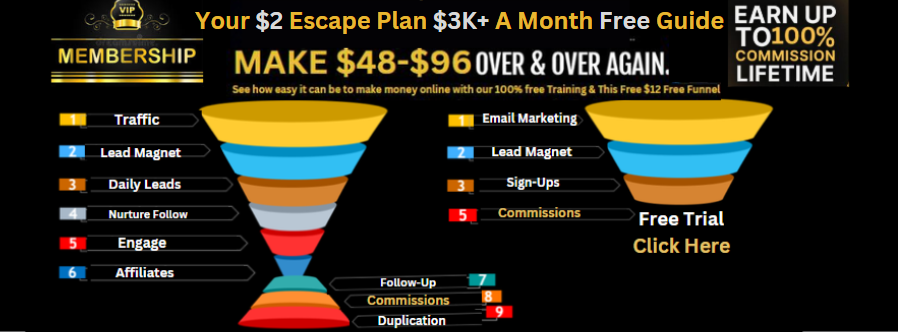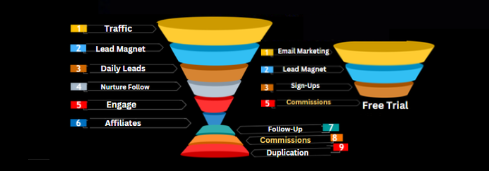In an increasingly competitive marketplace, businesses are constantly seeking effective strategies to convert prospects into loyal customers. A well-structured sales funnel serves as a vital tool in this process, guiding potential customers through a journey from initial awareness to final purchase. This guide dives into the creation of a sales funnel, a mechanism crucial for business growth and customer satisfaction.
Understanding the Sales Funnel
A sales funnel is a step-by-step process that leads potential customers through various stages of engagement with a product or service. The primary stages include:
Lead Generation: Attracting potential customers.
Lead Qualification: Identifying prospects interested in the offering.
Nurturing: Building relationships with qualified leads.
Closing: Finalizing sales.
Analysis: Assessing the funnel’s effectiveness.
Step 1: Define the Problem You Want to Solve for Your Customers
Purpose: The first step establishes the foundation of the funnel. Here, businesses must identify and empathize with the challenges their customers face.
Implementation: Conduct market research, customer surveys, and persona development. Businesses should ask, “What specific problems do our products or services solve?”
Example: struggle to create an online presence. They could target this issue by offering easy-to-use simple Funnel.
Step 2: Define Your Goals
Purpose: Clear goals set a target for what the sales funnel aims to achieve, whether it’s lead generation, conversion rate improvement, or customer retention.
Implementation: Use the SMART criteria (Specific, Measurable, Achievable, Relevant, Time-bound) to set objectives. For instance, aim to increase email list sign-ups by 25% in three months.
Example: A cosmetic brand might aim to enhance online sales by increasing Instagram engagement, measured by tracking likes, shares, and comments.
Step 3: Create a Preliminary Offer to Generate Leads
Purpose: This stage attracts potential customers into the funnel. The offer should be compelling enough to encourage initial engagement.
Implementation: Develop lead magnets like free trials, webinars, or e-books. Ensure these offers provide real value and are directly related to the products or services.
Example: An online language learning platform might offer a free e-book on common language learning pitfalls to capture the interest of language enthusiasts.
Step 4: Qualify Leads to Confirm Interest
Purpose: Qualifying leads helps focus efforts on individuals most likely to convert, optimizing resources and time.
Implementation: Use tools like lead scoring, which assigns points to leads based on their actions and engagement level. More engaged leads are more likely to convert.
Example: A B2B software company might score leads based on website interactions, webinar attendance, and email responses to prioritize high-scoring leads for direct sales efforts.
Step 5: Nurture Your Qualified Leads
Purpose: Nurturing builds a relationship with potential customers, gradually moving them towards a purchase decision.
Implementation: Develop targeted content marketing strategies, personalized email campaigns, and engage through social media. The key is consistent, valuable communication.
Example: A real estate agency might send monthly newsletters featuring home buying tips, market trends, and featured listings to keep leads engaged and informed.
Step 6: Close the Deal
Purpose: This critical phase converts nurtured leads into paying customers.
Implementation: Employ closing strategies like limited-time offers, personalized discount codes, or direct consultations. Sales teams should be trained to handle objections and close deals effectively.
Example: An online fitness coach might offer a 20% discount for the first month of personal coaching, creating urgency and incentivizing immediate sign-up.
Step 7: Track the Final Results and Analyze Sales Data
Purpose: Analysis of the funnel’s performance helps understand what works and what needs improvement, ensuring continuous optimization.
Implementation: Utilize analytics tools to track key metrics such as conversion rates, customer acquisition cost, and customer lifetime value. Regularly review and adjust strategies based on data insights.
Example: A digital marketing agency might use Google Analytics to track website conversions and customer behavior, adjusting their marketing strategies based on the data.
A sales funnel is more than a sequence of steps; it’s a strategic framework that reflects an understanding of customer needs and business objectives. By meticulously crafting each stage of the funnel and adapting to insights, businesses can not only achieve their sales goals but also forge meaningful connections with their customers, paving the way for sustainable growth and success. Test Drive My $2 Funnel
Erving Croxen
Contact me
Facebook Training
https://www.facebook.com/Ervingbroadcasting
23+ Years Marketing
To Your Success


